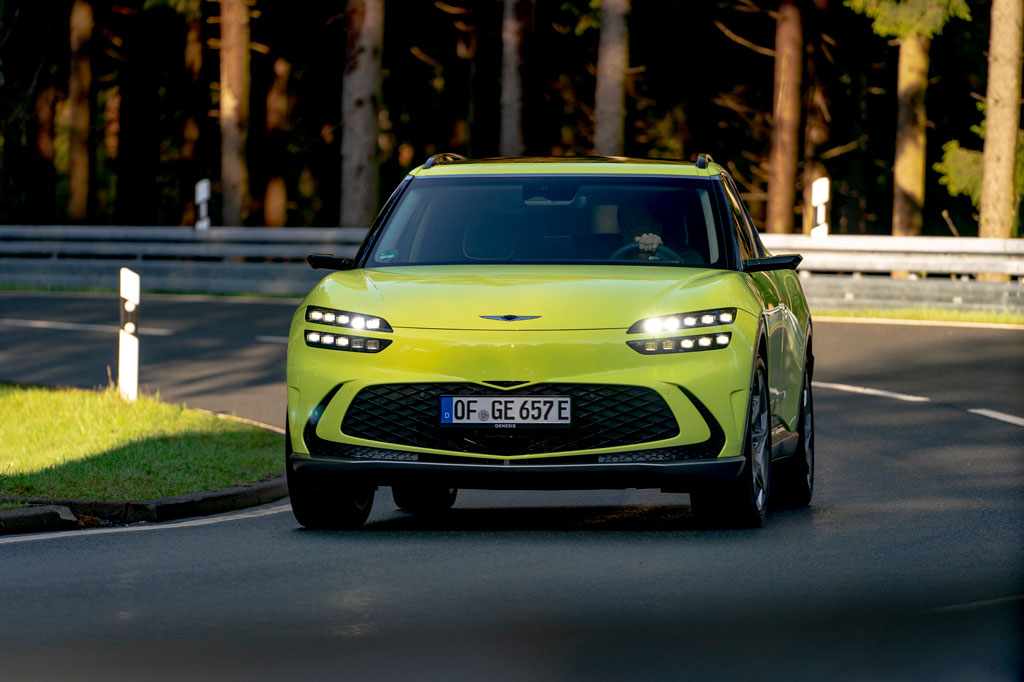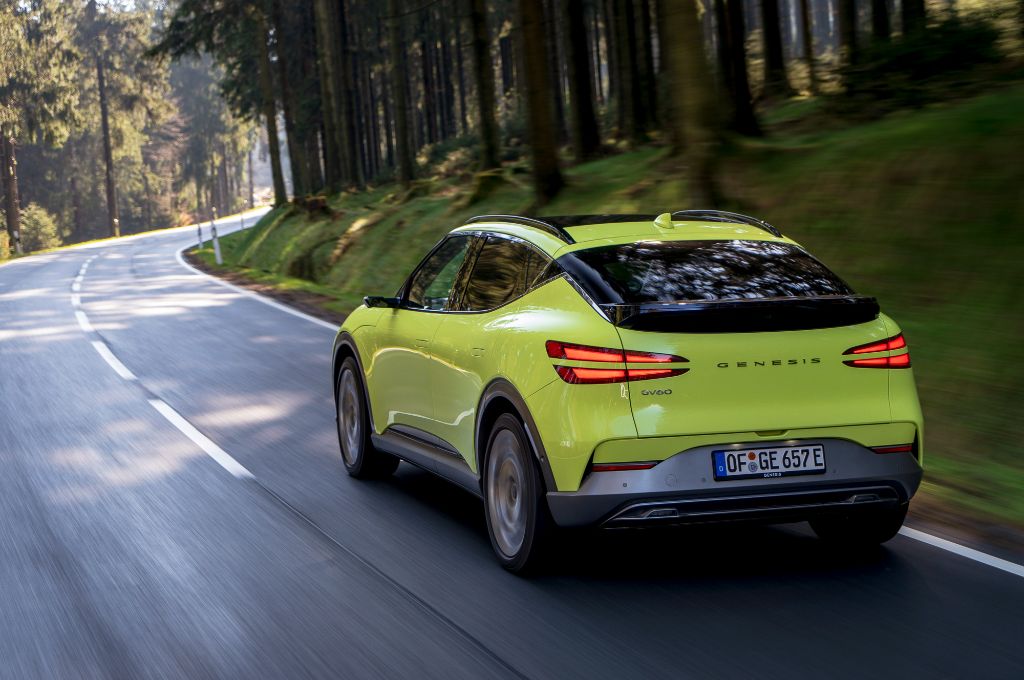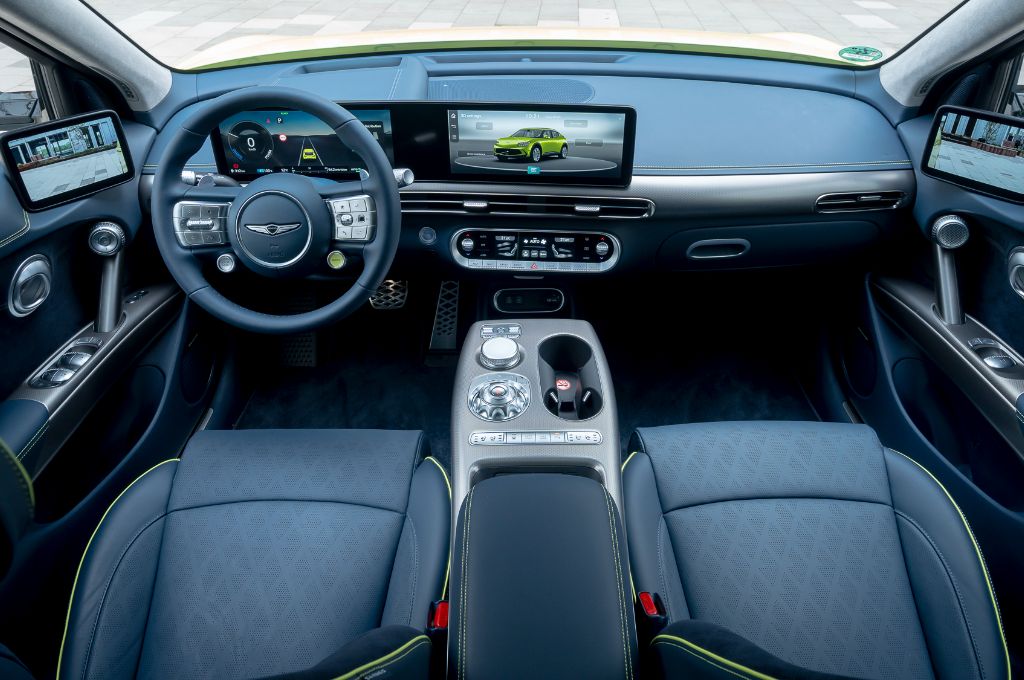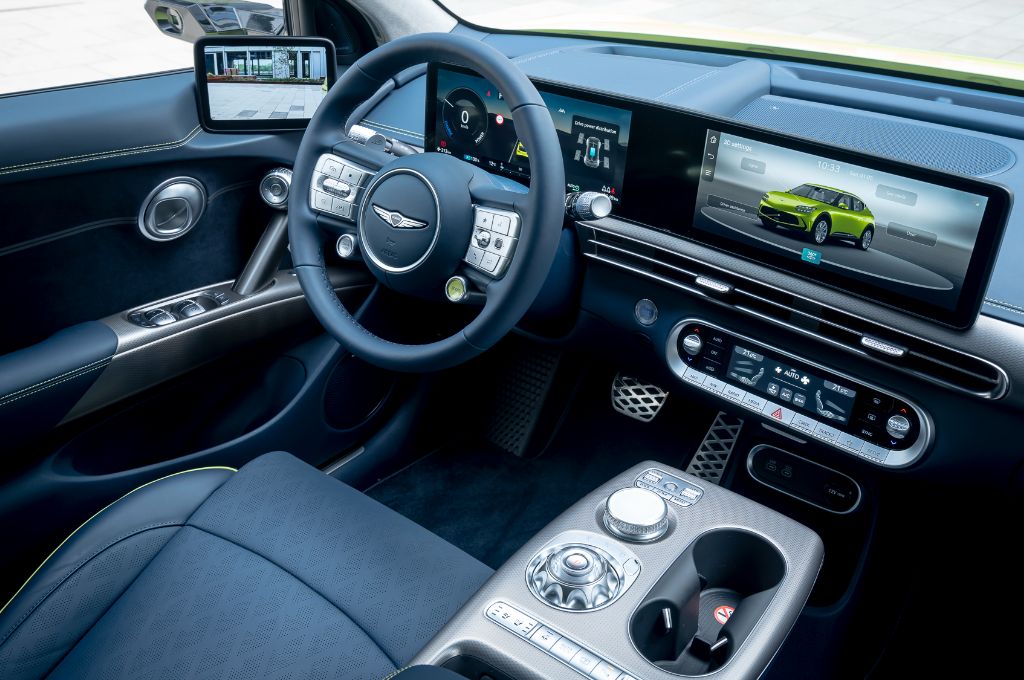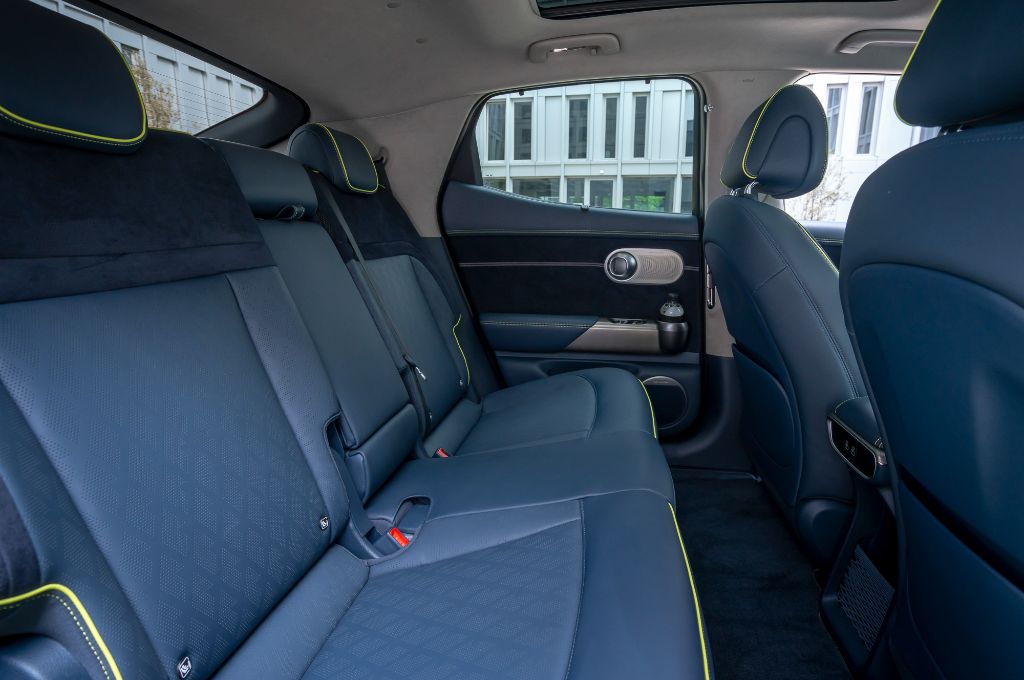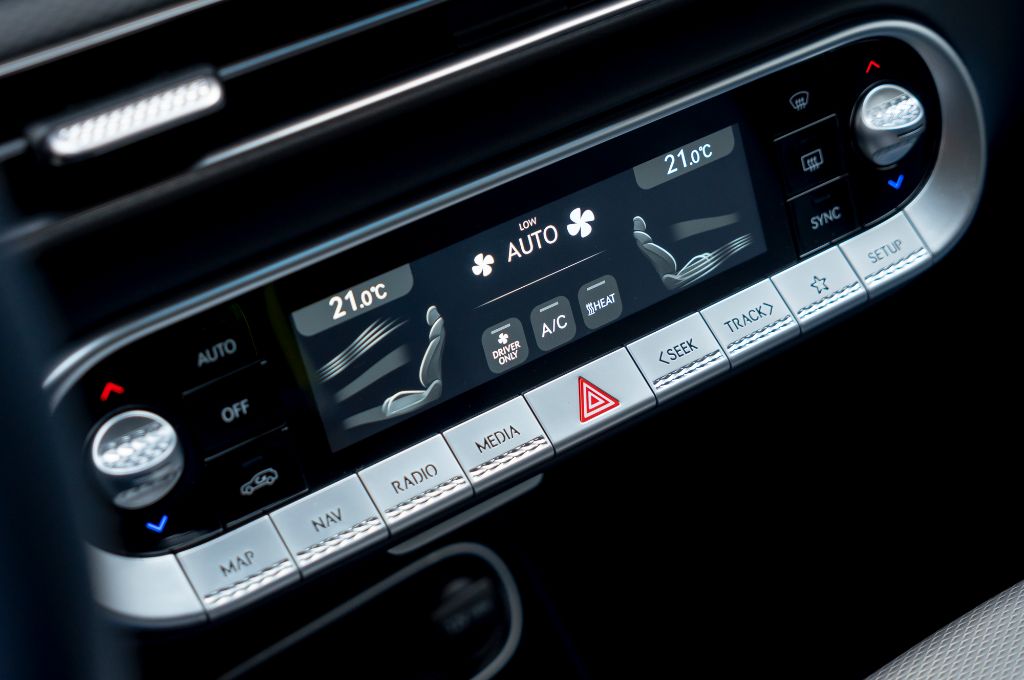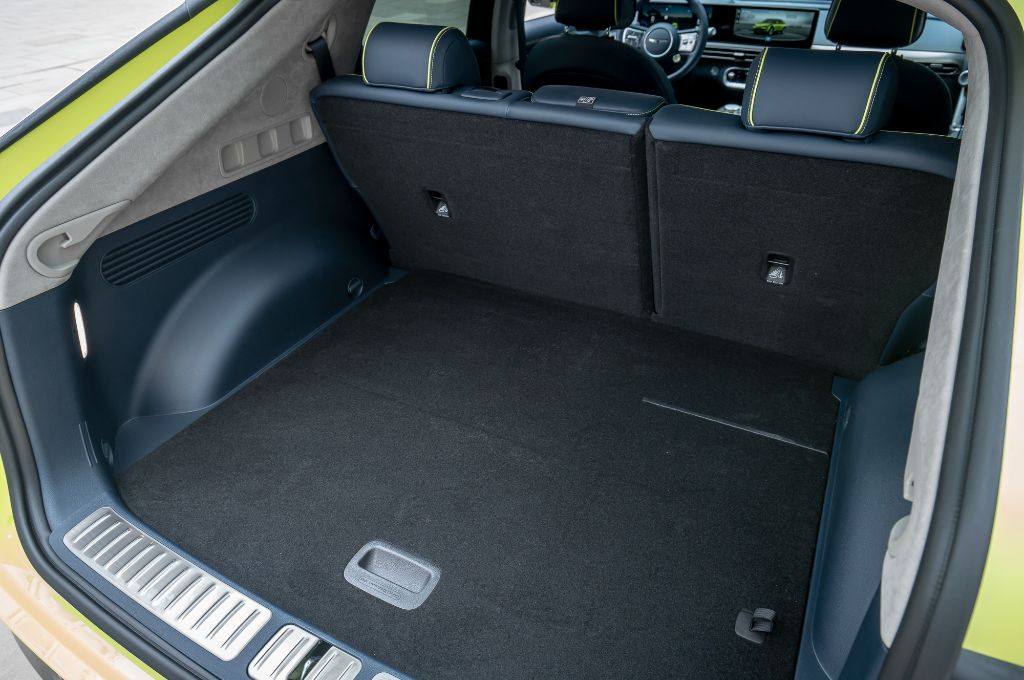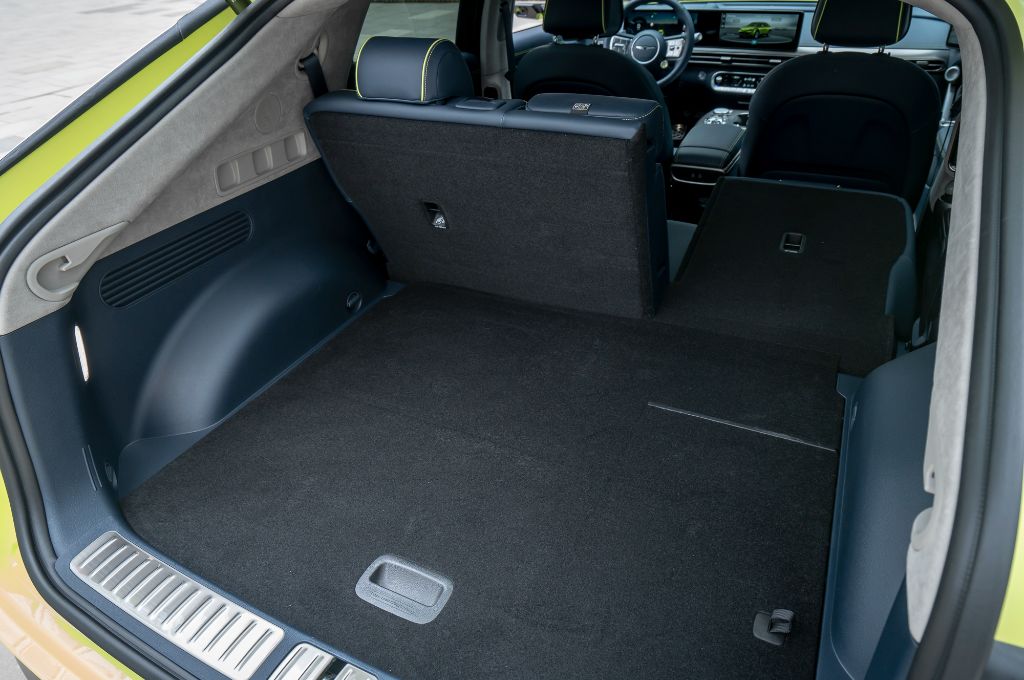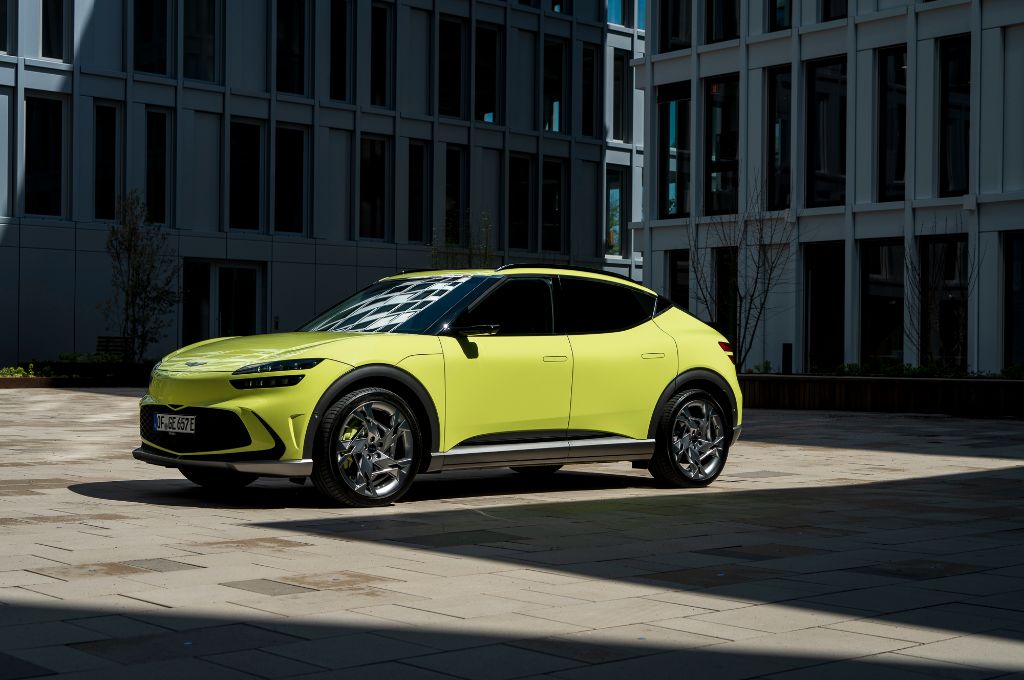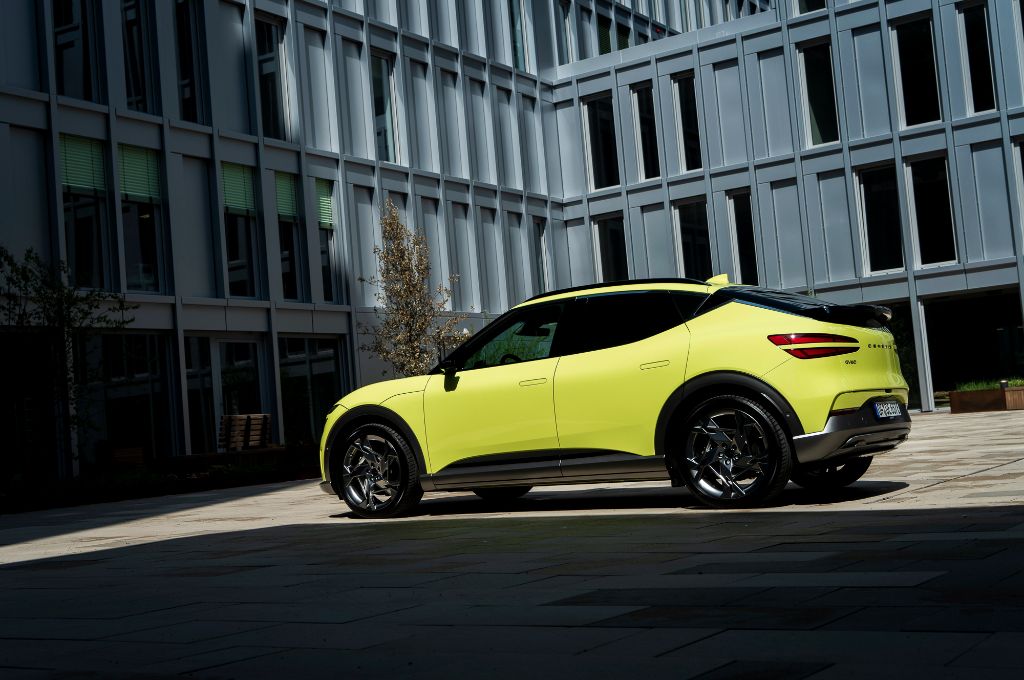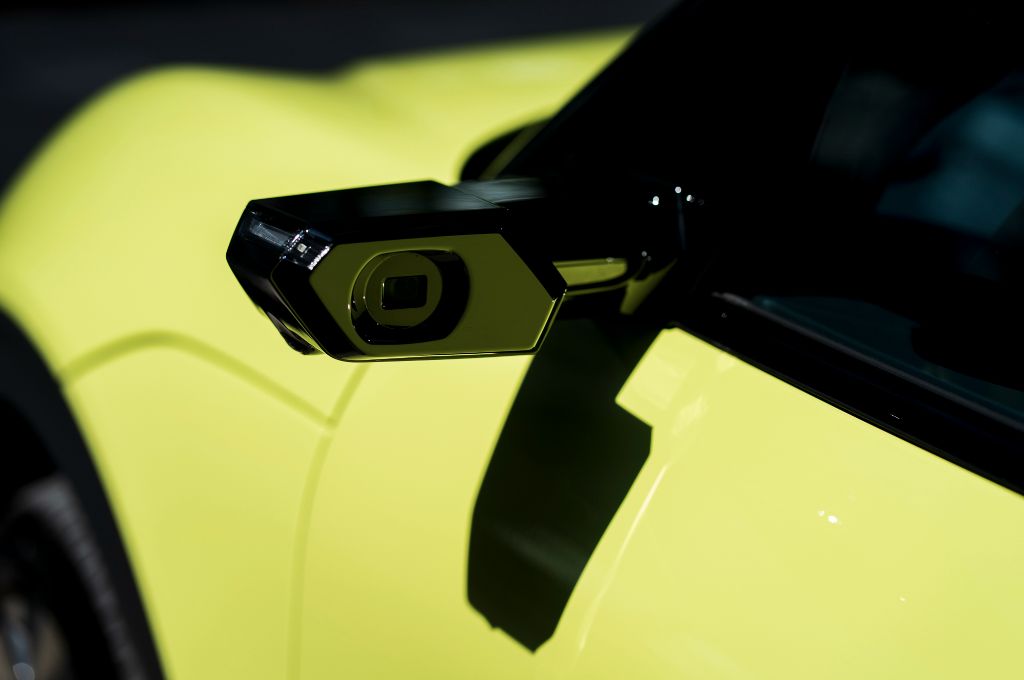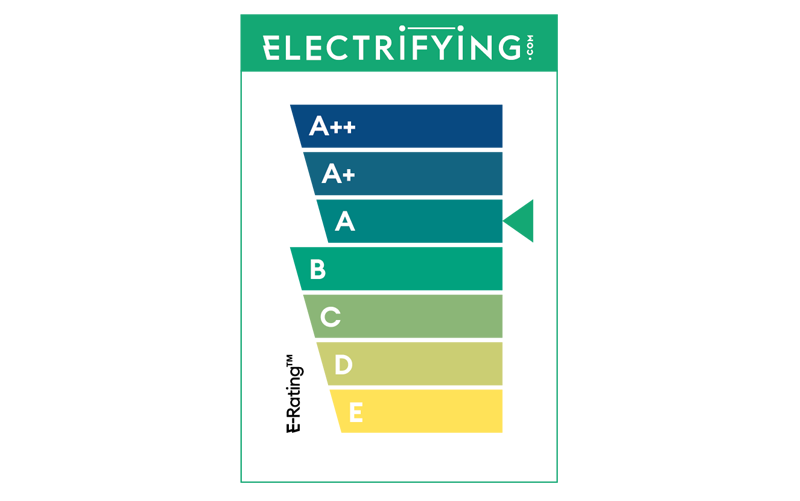While models like the G70 and G80 saloons have been available in the UK for a year or so, the GV60 marks the start of a major push into the electric arena. Genesis will introduce three electric vehicles in 2022 (a battery-powered GV70 and G80) and, from 2025, all new Genesis vehicles will be electric as part of the brand’s vision for a sustainable future.
The GV60 is based on the same underpinnings, or platform, as the Hyundai IONIQ 5 and Kia EV6 and will sit just above its stablemates in terms of price. If we consider the IONIQ 5 is the retro one and the EV6 to be the sporty one, the Genesis GV60 is marketed as the luxury one. It’s a clever approach and if its two stablemates are anything to go by, it certainly has the credentials to do well.
GV60 design and size
Although the GV60 shares all its underpinnings with the IONIQ 5 and EV6, the design team at Genesis have made a decent job of making it look different. It’s smoother and more rounded than the Hyundai and less aggressive than the Kia and strikes a decent balance between the two. The front end features Genesis’ trademark double-decker headlights along with a large (but ultimately redundant) grille.
The design detailing is interesting and won’t be to all tastes – much like the IONIQ 5 and EV6. The chrome-framed ‘V’ in the rear D pillar is particularly unusual feature and is a little jarring - especially when combined with lighter body colours such as the Sao Paulo lime green. Sadly though, the detailing doesn’t extend to a rear wiper. As with the IONIQ 5 and EV6, the GV60 relies on channelled air to keep the rear screen clear of muck. Which is a great idea on paper, but as countless IONIQ 5 and EV6 owners will attest, it doesn’t work in the real world.
Like its Korean stablemates, the GV60 is a deceptive car. Thanks to its huge wheels and oversized lights, it looks almost compact in photos. In reality, it’s closer in size to family SUVs such as the ŠKODA Enyaq or Volkswagen ID.4. And while it’s fractionally shorter than both the EV6 and IONIQ 5, it’s a big car.
Inside, Genesis has clearly worked hard to differentiate the GV60 from its siblings. While the long floating infotainment screen takes the same form as that fitted to the IONIQ 5 and EV6, that’s about as much as you can recognise. The seats feel more luxurious while the rounded controls in the dashboard and the raised centre console are all unique to the GV60.
Button lovers will be delighted by the number of individual switches Genesis has been able to cram in. Remembering where they are is something of a challenge at first – especially the out of sight ones on the centre console that control the heated seats, steering wheel and parking cameras. The gear selector is located on the raised centre console and sits just behind what looks like a second gear selector. The smaller wheel controls the infotainment system and works in largely the same way as BMW’s iDrive system.
The gear selector is quite the conversation piece and is either a work of art of a pointless gimmick, depending on your outlook / cynicism. In standby mode (ie not turned on), the selector takes the form of a crystal sphere that glows to match the ambient light settings. Press the start button the dashboard and the sphere rotates in a kind of James Bond / Indiana Jones fashion to reveal the selector wheel. It’s a fun bit of theatre, and while it doesn’t add a thing to the driving experience, it’s always good to see a few gimmicks that make it from concept to production.
Genesis has cleverly re-skinned the GV’s infotainment system to give it a more premium look. While it still has the functionality of the Hyundai and Kia systems (including the clever blind-spot camera on the main display), the vertical tiles of the main screen are easy to navigate and decently quick to react. The main binnacle display also comes with additional animations including a brilliant navigation indicator that overlays directions on a real-time camera feed from the front of the car. And just in case you need even more information, there’s a clear and easy-to-use head-up display on all models.
One element that takes a little more getting used to are the digital side mirrors. A £1,240 optional on all models, their integration into the GV60’s cabin feels rather heavy-handed. The displays – which have thick 90’s style black bezels – have been carved into the door trims and look clumsily attached. And although you do get used to looking in a different place to check them, they feel a somewhat inelegant solution to a problem that doesn’t need solving.
In terms of space, the GV60 provides passengers with decent levels of leg and headroom.The wide centre console is more intrusive than it is in a Hyundai IONIQ 5, but that doesn’t detract from the overall feeling of spaciousness. Rear seat passengers benefit from the flat floor and while it can’t match the boxier IONIQ 5 for headroom, the GV60 offers first class levels of comfort all round. That said, if you opt for the comfort seat pack, there’s precious little space under the front seats for back-seat occupants to slide their feet.
Like its siblings, the GV60 doesn’t quite hit the mark when it comes to boot space. While luggage capacity figures of 680 and 1,550 litres are okay, the boot floor is high and the load area is relatively shallow. If you’re looking for a big hatchback and want to carry bulky stuff such as a dog crate, the GV60 may not be the perfect match.
GV60 battery, range and charging
From launch, the GV60 comes with a single battery option – a 77.4kWh pack shared with the Kia EV6 and the 2023 IONIQ 5.
Like its stablemates, the GV60 has an 800 volt electrical system that is capable of delivering exceptionally high charging speeds when connected to a suitable rapid charger. Genesis quotes a top charging speed of 225kW (the same as Hyundai and Kia) and claims that the the GV60 can charge from 10-80% in 18 minutes on a 350kW rapid charger. Unlike early IONIQ 5 models, all GV60s will be equipped with a battery heating system that is linked to the nav system. Driving who put a charging stop as their destination will find that the battery is perfectly heated or cooled to the correct temperature for rapid charging.
On rapid chargers with more modest outputs, the GV60 will charge from 10-80% in 65 minutes on a 50kW unit, 35 minutes on a 100kW charger and 25 minutes on a 150kW.
AC charging peaks at 11kW (with a three-phase connection), which is on a par with what rivals currently offer. Expect an empty to full charge to take around 11 hours on a domestic 7kW wallbox.
As for range, Genesis quotes a WLTP figure of 321 miles for the entry-level Premium model, 292 miles for the Sport and 289 miles for the Sport Plus. Expect real world figures to be around 265, 250 and 220 miles respectively.
GV60 performance and driving
Customers have three power outputs to choose from, along with the option of all-wheel drive. The entry-level Premium model has a single motor that drives the rear wheels and develops 225bhp. Sport models introduce a second motor on the front axle along with a power increase to 314bhp, while the range-topping Sport Plus delivers 430bhp thanks to a 215bhp motor on each axle.
That’s enough power to get the GV60 from 0-62mph in as little as 4.0 seconds. Opt for the rear-drive Premium model and you’ll be able to do the same sprint in 7.8 seconds. To keep drivers entertained, Genesis also offers drivers a temporary power increase via boost button on the steering wheel. Hit the button and the motor output is lifted by 52bhp for 10 seconds. Power boost is only available on the Sport Plus version and raises the total output to 482bhp.
Bizarrely, Genesis also offers drivers the opportunity to select a special ‘Drift mode’. This setting alters the torque split and brakes to allow drivers to override the stability control and slide two tonnes of GV60 if whatever direction they please.
On the road, the GV60 delivers a great drive. Even on the 21-inch wheels of our Sport Plus test car, the ride is compliant and all the biggest bumps are steamrollered long before they make their presence felt in the cabin. The steering is light and set-up for comfort rather than sporty responses. And while the motors deliver savage acceleration when you need them to, and the electronic limited slip differential does a good job of channelling power to the wheels, the GV60 doesn’t feel like a sporty car. It can certainly behave like a performance car if 0-62mph times are your defining factor, but you’ll get much more reward just enjoying the huge levels of torque on a meandering A road. It’s a car that feels at its best when you’re not trying to squeeze out every last drop of power.
For drivers who miss the rattle and hum of a traditional internal combustion engine, Genesis has added what it calls an electric-Active Sound Design (e-ASD) system that pipes a variety of artificial noises into the cabin. The pitch and tone of the sounds change according to speed and pedal position with drivers able to choose between Futuristic, G-Engine (which sounds like a V8), and E-Motor. None are particularly convincing, but the fact that customers have the option is worth applauding.
Genesis GV60 value and equipment
The UK range consists of three models with prices that range from £47,005 for the RWD Premium model, up to £65,405 for the Sport Plus model. Those prices place the GV60 above the IONIQ 5 and EV6 ranges with a slight overlap. In terms of kit, even the Premium comes with plant-based leather trim, 19-inch alloys and a full suite of safety and driver aid features such as smart cruise control and rear cross-traffic collision avoidance. Sport Plus models add Nappa leather seats and 21-inch allows among other items.
No traditional dealers
Genesis is hoping to set a new standard for buying an ownership with the GV60. Although that sounds a lofty ambition, the brand has taken inspiration from the likes of Tesla, which has made internet ordering and brand centres commonplace. Instead of having to haggle with a salesperson, Genesis will offer buyers a personal assistant who will steer you through the buying and ownership experience. Prices are fixed and all test drives will be done from specific brand centres rather than traditional dealers. Servicing will be carried out at strategically placed Genesis workshops. However, as customers will have their cars collected and returned at servicing time, few will ever have to travel to find one.










